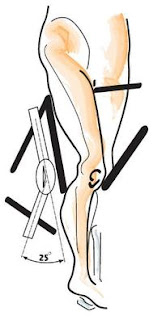Sejak hari Rabu, 26hb Mei lagi bebudak tu duk hantar e-mail nak set hujung minggu ni nak pi pusing Gunung Jerai. Hari Jumaat, 28hb Mei dapat cuti coz Hari Wesak. So, kami ada 3 hari cuti. Aku suggest hari Sabtu coz Ahad boleh recover sebelum pi kerja balik. Tapi, AP bagitau kata AK nak ajak kayuh pagi Jumaat. Katanya nak light training sebelum pi Ipoh Jamboree Ahad ni.
Pikir punya pikir, since aku pun plan nak naik Gunung Jerai hari Ahad ni.....so wth...aku ikut AP dan AK set hari Jumaat pagi. AK dan aku memang duk satu taman (lebih kurang la). So, aku set jumpa dia kat simpang taman jam 7. Memang standard la budaya orang Jepun, aku sampai terpacak jam 7 pagi, AK dah ada kat simpang warming up buat 'donut' (pusing-pusing la tu).
So, kami kayuh dari taman kami pi ke kaki Gunung Jerai. On the way, kami rendezvous ngan AP. Sampai kat kaki Gunung Jerai, R dah ada kat situ. Dia bagitau, bebudak lain set esok.

Haa..tu dia, dari kiri aku, R dan AK masa kami duk borak-borak ngan geng lain kat parking lot tu. Pastu, kami start kayuh ikut jalan nak pi Titi Hayun. Jalan tu kira mini-tar kampung la. Lalu kot tepi rumah, dusun, ban, kubur Cina dsbgnya. Sepanjang jalan memang redup coz banyak pokok. Kekadang ada jugak naik turun, so kena be prepared nak tukar gear ikut sedap rasa. Lagi satu, kena hati-hati sket dengan motosikal yang datang dari arah bertentangan.

Gambar ni aku amik masa refueling stop kami kat pekan Yan. Nak cerita tempat menarik untuk dilawati kat Yan ni, aku pun bukannnya expert sangat tapi kalu nak mandi air terjun bole la kat Titi Hayun dan Batu Hampar. Yang suka melepak tepi pantai tu bole la pi Pantai Murni. Tapi mungkin kureng sesuai untuk mandi-manda coz berselut sket.
Lepas refuel stop, kami start kayuh pi Tanjung Jaga. Biasala, aku first time ikut otai-otai ni, takder masa nak enjoy the view...concentrate tak mau kena tinggai. Anyway, dia punya view memang cantik terutama jalan susur pantai. Orang-orang kat sini kira ada juga yang buat banglo besar-besar...cantek siut. Sorry, tak sempat ambik gambar. Maybe next time bila aku kayuh sorang-sorang. Tup-tup AP bagitau dah nak sampai bukit...hmm...tengok macam bole tahan gak. Anyway, try jelah. Lepas bukit yang first tu, AP stop sat bagi aku amik gambar.

Dari kiri AP, R dan AK.

Gambar ni aku terpaksa Photoshop sket bagi memanjang coz lepas aku tengok without modification nampak kaki pendek siut. Lepas ni kami continue kayuh sampai pekan Merbok, Tupah, UiTM dan AIMST. Aku try ikut AK. AP dan R ada kat belakang sket. Depa bagi chan kat aku.

Sebelum sampai UiTM, aku plak pi depan. Since aku familiar ngan kawasan ni, aku up sikit kami punya cruising speed. AP dan AK rilek jer kat belakang, aku dah separuh KO. Tapi tak per coz sampai pekan Bedong, rumah aku dah dekat. AP dan R kena kayuh lagi.
Ni, gambar yang aku amik masa kami tunggu R di pekan Bedong. Lepas, R sampai, kami borak sket then say bye-bye. AP dan R terus kayuh ke Gurun. Aku dan AK kayuh balik taman kami. Aku wish good luck kat AK untuk Ipoh Jamboree Ahad ni.
Kesimpulannya selepas aku first time pusing Gunung Jerai ni....memang syok. Sekali lagi, aku nak ambil masa sket buat kayuhan santai, baru bole amik gambar lebih sket. Jarak kayuhan keseluruhan adalah lebih kurang 65km. Average speed 23~25km/hr. Top speed lebih 40km/hr. Masa kayuhan 2 jam 25 minit.






























